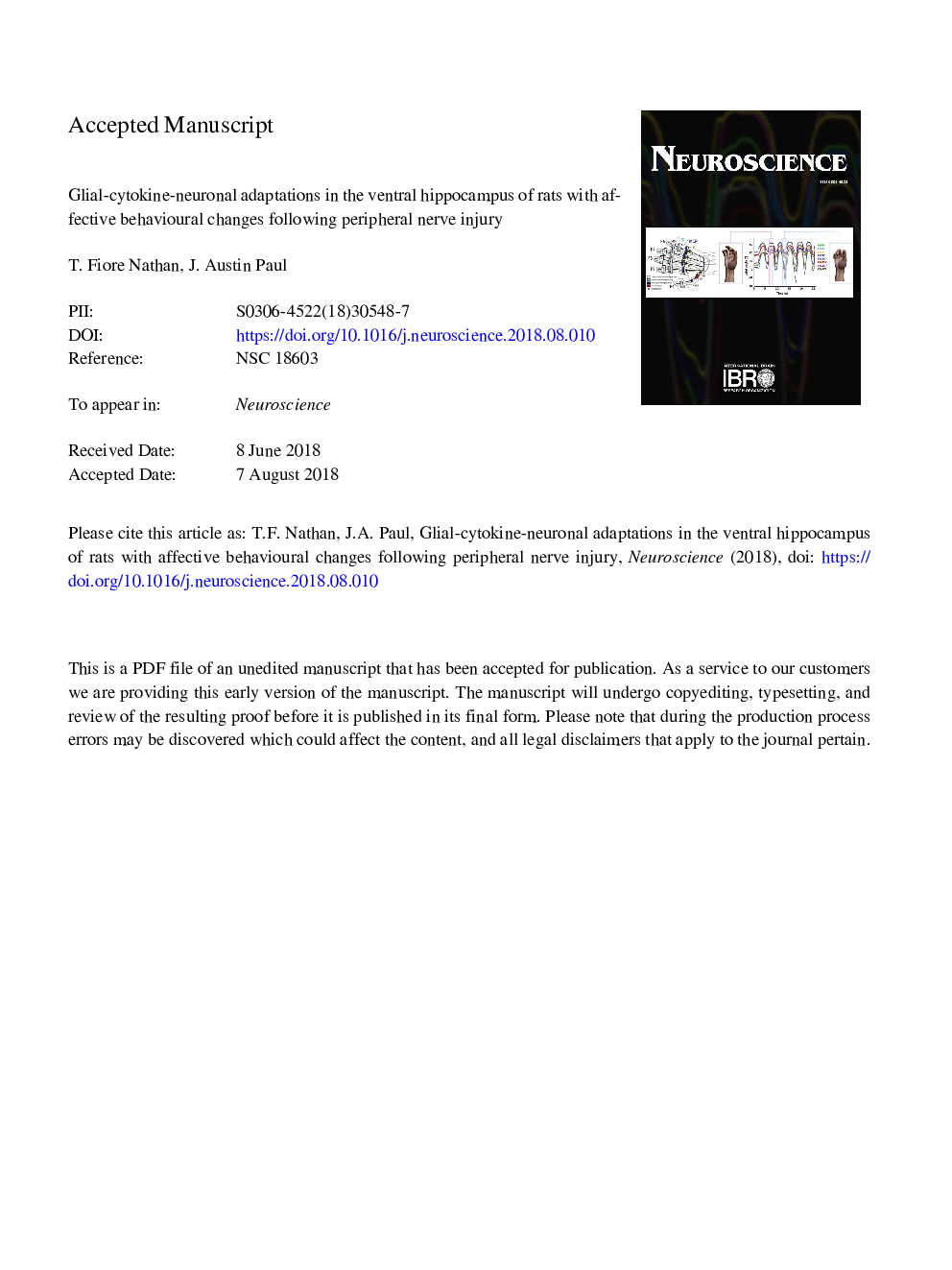| Article ID | Journal | Published Year | Pages | File Type |
|---|---|---|---|---|
| 10144168 | Neuroscience | 2018 | 51 Pages |
Abstract
Nerve damage leads to the development of disabling neuropathic pain in susceptible individuals, where patients present with pain as well as co-morbid behavioral changes, such as anhedonia, decreased motivation and depression. In this study we evaluated whether radial maze behavioral disruptions and glia-cytokine-neuronal adaptations in the hippocampus occurred in individual rats after nerve injury. Exploration behavior and spatial memory were quantified using a radial maze task, while mechanical allodynia was assessed using von Frey testing. Sciatic nerve chronic constriction injury (CCI) reduced withdrawal thresholds in all rats, while pellet-seeking behaviors were altered in some but not all rats. One group, termed 'No effect', had no behavioral changes compared to sham rats. Another group, termed 'Acute effect', had a temporary alteration to their exploration pattern, displaying more risk-assessment behavior in the early phase post-injury. In a third group, termed 'Lasting effect', exploratory behaviors were remarkably different for the entire post-injury period, showing a withdrawal from pellet-seeking. The withdrawal from pellet-seeking was found to be concomitant with distinct glial-cytokine-neuronal adaptations within the contralateral ventral hippocampus, including; increased expression of IL-1β and MCP-1; astrocyte atrophy and decreased area in the dentate gyrus; reactive microglia and increased FosB/ÎFosB expression in the cornu ammonis subfield. Therefore, glial-cytokine-neuronal adaptations in the ventral hippocampus may mediate individual differences in radial maze behavior following CCI. Our data suggest that individual neuroimmune signatures play a significant role in divergent behavioral trajectories following nerve injury, toward functional recovery and coping, or the emergence of ongoing affective state disturbances.
Keywords
PBSNHSCCICCR2CD11BIL-1βIL-1RDAPIMCP-1cluster of differentiation molecule 11bWmEGFAPstretched attend postureexploration behaviorIL-64′,6-diamidino-2-phenylindoleBDNFIba-1chronic constriction injuryImmunoreactivityinterleukin-6Interleukin-1βcornu ammonisworking memory errorNeuropathic painnormal horse serumCytokinesSAPBrain-derived neurotrophic factorFosBPhosphate-buffered salineionized calcium-binding adapter molecule-1ventral hippocampusGlial fibrillary acidic proteinmonocyte chemoattractant protein-1interleukin-1 receptorGlia
Related Topics
Life Sciences
Neuroscience
Neuroscience (General)
Authors
Nathan T. Fiore, Paul J. Austin,
